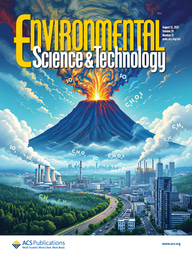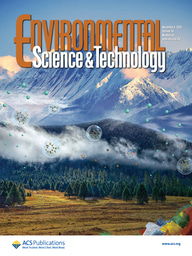Unmasking the Hidden: An Advanced Framework for Aerosol Molecular Analysis
Published in Chemistry and Earth & Environment

Explore the Research
acs.analchem.5c01723?utm_campaign=related_content&utm_source=HEALTH&utm_medium=communities
The Critical Need for Molecular-Level Understanding
The atmosphere contains thousands of organic compounds that fundamentally influence air quality and climate processes. Understanding these molecules at the individual level is essential for identifying pollution sources, assessing health impacts, and predicting environmental changes. Advanced mass spectrometry techniques like Filter Inlet for Gases and Aerosols Chemical Ionization Mass Spectrometry (FIGAERO-CIMS) and Extractive Electrospray Ionization Time-of-Flight Mass Spectrometry (EESI-TOF) have transformed our ability to detect and characterize these atmospheric molecules in real-time, providing unprecedented insights into atmospheric composition.
However, this analytical power comes with a significant challenge: instrument background interference. The very sensitivity that enables detection of trace atmospheric molecules also makes these instruments susceptible to contamination signals from instrument walls, carrier gas impurities, and material degradation. These background signals often overlap substantially with genuine atmospheric signals in mass spectra, creating analytical complexities that have long challenged atmospheric scientists.
The Scale of the Problem
The implications of background interference extend well beyond technical inconvenience. When background signals mask or contaminate atmospheric measurements, researchers face systematic analytical errors: genuine molecules remain undetected, concentrations are underestimated, and pollution source identification becomes compromised. Even state-of-the-art instruments with mass resolutions exceeding 10,000 Th/Th encounter this fundamental challenge.
The stakes are considerable: atmospheric particles comprise complex mixtures of thousands of molecular species, each with distinct toxicity profiles, environmental behaviors, and biological activities. Incomplete characterization due to background interference could mean overlooking critical pollution pathways or health-relevant compounds, limiting our understanding of atmospheric processes and their impacts.
An Innovative Solution: SMART-PMF
Researchers at Nanjing University's School of Atmospheric Sciences have developed a novel analytical framework to address this challenge. Their SMART-PMF (Simultaneous background correction and chemical characterization via Positive Matrix Factorization) system introduces a new approach to mass spectrometry data processing that simultaneously corrects for background interference while identifying atmospheric molecules.
The key innovation lies in SMART-PMF's approach to signal separation. Rather than treating background correction as a preprocessing step, the framework applies Positive Matrix Factorization directly to continuous mass spectrometry data. This strategy exploits a fundamental principle: while background and atmospheric signals may be indistinguishable in mass spectral space, they exhibit distinctly different temporal behaviors.
Background signals typically remain stable or vary independently of atmospheric conditions, while genuine atmospheric signals fluctuate with emissions patterns, meteorological changes, and photochemical processes. SMART-PMF leverages these temporal signatures to objectively separate the two signal types, even when they overlap significantly in the mass domain.

Substantial Performance Improvements
Validation studies demonstrate SMART-PMF's effectiveness across multiple platforms. When applied to both FIGAERO-CIMS and EESI-TOF datasets, the framework achieved strong agreement with reference Aerosol Mass Spectrometer (AMS) measurements, with correlation coefficients reaching 0.84. This consistency indicates reliable extraction of genuine atmospheric signals from complex mass spectral data.
The framework's impact on molecular detection capability is particularly noteworthy. In the m/z 200-300 Th range analyzed by EESI-TOF, SMART-PMF increased the number of identifiable atmospheric peaks from approximately 150 to nearly 500 – representing a 230% improvement in detection capacity. This enhancement reveals previously obscured atmospheric molecules, substantially expanding our molecular-level understanding of atmospheric composition.
Broader Implications and Applications
SMART-PMF addresses multiple operational challenges in atmospheric mass spectrometry. Beyond improving data quality, the framework enhances analytical automation, reduces manual intervention requirements, and minimizes subjective interpretation. The standardized approach also improves data comparability across different instruments, measurement locations, and research groups.
The analytical principles underlying SMART-PMF have potential applications beyond atmospheric chemistry. The temporal signal separation approach could benefit environmental monitoring, bioanalytical measurements, and materials characterization – any field where complex background interference limits mass spectrometric analysis.
As atmospheric chemistry research increasingly relies on molecular-level understanding, analytical tools like SMART-PMF become essential for characterizing the complex molecular processes that govern air quality and climate. The framework doesn't just improve our analytical capabilities – it expands the very boundaries of what we can discover in the molecular world surrounding us.


Please sign in or register for FREE
If you are a registered user on Research Communities by Springer Nature, please sign in